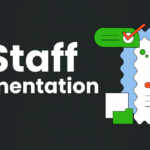The cloud is no longer just a buzzword; it’s a driving force behind modern business transformation. Cloud computing is predicted to generate over $700 billion in revenue worldwide in 2025, underscoring its immense impact on the global economy. As organizations increasingly look to the cloud for innovation, scalability, and cost savings, understanding the readiness to make this transition is crucial.
While the benefits of cloud adoption are clear—improved agility, cost efficiency, and access to advanced technologies—navigating the shift requires more than just enthusiasm. A cloud assessment helps organizations evaluate their IT infrastructure and identify areas needing improvement before migrating to the cloud. By thoroughly assessing readiness, companies can ensure a smooth transition, minimizing risks and maximizing the potential benefits of cloud technology. This article explores the different aspects of a cloud readiness assessment, from understanding its core components to leveraging the right tools and strategies.
What is a Cloud Assessment?
A cloud readiness assessment is a strategic evaluation process that examines an organization’s existing IT infrastructure, applications, data, processes, and security measures to determine its preparedness for cloud migration. This comprehensive assessment helps identify any gaps or areas needing enhancement to ensure a smooth transition to the cloud. By assessing these aspects, organizations can create a tailored migration plan that aligns with their business goals and minimizes disruptions during the transition.
The cloud readiness assessment also highlights potential challenges, such as outdated software, data sensitivity, or compliance requirements, that could impede a successful migration. By identifying these roadblocks early, organizations can proactively address them, reducing the risk of unforeseen complications. Overall, the cloud readiness assessment is a vital step in creating a robust cloud adoption strategy, ensuring that every aspect of the organization is aligned and prepared for the shift.
Key Components of a Cloud Readiness Assessment
1. Business Objectives and Goals
Before beginning a cloud readiness assessment, it is essential to define clear business objectives and goals. Understanding why the organization wants to move to the cloud—whether to reduce costs, increase agility, enhance productivity, or leverage advanced cloud functionalities like artificial intelligence and machine learning—is critical. Aligning cloud migration strategies with these business objectives ensures that the transition is technically sound and strategically beneficial.
2. Current IT Infrastructure Analysis
A thorough examination of the current IT infrastructure is crucial in determining which components are suitable for cloud migration. This involves assessing hardware, software, network configurations, and ongoing operations. Understanding the existing IT environment helps identify which parts can transition smoothly to the cloud, which require modifications, and which might need to be replaced or retired. This step also uncovers potential dependencies and challenges that could affect the migration process.
3. Application and Data Inventory
Creating an inventory of all applications and data is another key component of a cloud readiness assessment. This process involves cataloging all applications, databases, and data repositories, along with their dependencies and usage patterns. This step helps determine the complexity and feasibility of moving each component to the cloud. It also helps assess data sensitivity, privacy, and regulatory compliance, ensuring that sensitive information is handled appropriately during the migration.
4. Security and Compliance Requirements
Security and compliance are paramount when planning a cloud migration. A cloud readiness assessment evaluates current security measures and compliance requirements to ensure the cloud setup meets industry standards and legal obligations. This includes assessing data encryption, access management, and adherence to regulations like GDPR or HIPAA. By identifying vulnerabilities and gaps in the current security framework, organizations can enhance their security posture during the cloud transition.
5. Cost Analysis and Budgeting
Cost is a significant factor in cloud migration decisions. A thorough cost analysis helps organizations understand the total cost of ownership (TCO) for cloud migration, including one-time migration costs and ongoing operational expenses. This analysis allows for a comparison of current infrastructure costs with projected cloud costs, helping to make informed financial decisions. Budgeting for cloud migration also involves setting aside resources for potential unexpected costs, ensuring that the transition remains within financial constraints.
6. Team Skills and Training Needs
Ensuring that the organization’s team has the necessary skills and recognizing any training needs is vital for a successful cloud transition. IT personnel must be adept at navigating and operating in a cloud environment, which may require upskilling current staff or hiring cloud technology experts. Investing in training programs and certifications helps prepare the team for the changes and opportunities of a cloud-based platform, ensuring a smoother transition.
Six-Step Approach to Conducting a Cloud Readiness Assessment
Step 1: Define Business Objectives
Understanding the organization’s goals is the first step in a cloud readiness assessment. This involves clarifying the reasons for moving to the cloud, such as cost reduction, increased agility, or faster innovation. Engaging stakeholders from all departments helps align the cloud strategy with overall business objectives, creating a roadmap that supports the organization’s long-term goals.
Step 2: Evaluate Current IT Infrastructure
Assessing the current IT infrastructure involves examining hardware, software, network configurations, and data storage solutions. This step identifies components that can be migrated, those that need upgrading, and those that should be replaced. Evaluating the IT environment helps identify potential bottlenecks and dependencies that could impact the cloud migration process.
Step 3: Perform Application and Data Inventory
Cataloging all applications and data provides a comprehensive overview of the organization’s IT environment. This step involves classifying applications based on their cloud compatibility and determining which need modification or should remain on-premises. Data evaluation assesses the volume, sensitivity, and compliance requirements of each dataset, guiding the migration strategy.
Step 4: Assess Security and Compliance Requirements
Reviewing existing security policies and compliance obligations ensures that the cloud setup meets all necessary standards. This step involves planning for data encryption, access management, threat detection, and incident response to safeguard data and minimize risks during the cloud migration process.
Step 5: Analyze Costs and Allocate a Budget
A detailed cost analysis compares current infrastructure costs with projected cloud expenses, including subscription models, data transfer costs, training, and potential downtime. This step also involves setting aside resources for unexpected issues, creating a budget that supports investment discussions with stakeholders.
Step 6: Develop a Migration Strategy
Choosing the right migration strategy—whether lift-and-shift, re-platforming, or re-architecting—depends on the organization’s needs and objectives. A phased migration approach minimizes business disruption, while testing and validation ensure a smooth transition. A detailed cloud migration strategy outlines the approach, timelines, and responsibilities for a successful migration.
Cloud Readiness Assessment Template
A cloud readiness assessment template is a valuable tool that provides a structured approach to evaluating an organization’s preparedness for cloud migration. It covers key areas such as business objectives, IT infrastructure, security, and compliance, offering a comprehensive view of the organization’s readiness for the cloud.
Template Overview:
- Business Assessment:
- Alignment with business strategy
- Cost-benefit analysis
- Risk assessment
- Stakeholder mapping
- Technology Assessment:
- Application portfolio analysis
- Infrastructure assessment
- Data assessment
- Dependency mapping
- Security and Compliance Assessment:
- Security assessment
- Compliance requirements
- Data privacy assessment
- Organizational Assessment:
- Skills and resources
- Change management
- Cloud provider selection
- Migration Planning:
- Migration strategy
- Data migration plan
- Testing and validation
- Disaster recovery and business continuity
Tools and Techniques for Cloud Readiness Assessment
Using the right tools can significantly streamline the cloud readiness assessment process. Here are some popular options:
- AWS Cloud Adoption Readiness Tool (CART): A free tool by AWS that helps organizations assess their IT infrastructure for cloud migration, identify gaps, and develop strategies to overcome them.
- Azure Cloud Adoption Framework (CAF): A free tool from Microsoft Azure, including documentation and implementation guides, to help organizations assess their readiness for Azure cloud migration.
- Google Cloud Readiness Assessment: A tool for enterprises interested in adopting Google Cloud, offering insights into cloud readiness, security, and compliance.
Techniques for Effective Assessment:
- Identifying Gaps: Spotting differences between the current IT environment and desired cloud state.
- Benchmarking: Comparing cloud achievements with industry standards to gauge performance.
- Workload Evaluation: Assessing cloud readiness based on performance, security, and dependencies.
- Cost-Effectiveness Evaluation: Monitoring and reviewing costs to ensure efficient cloud adoption.
- Risk Evaluation: Identifying risks and developing mitigation strategies to ensure a smooth transition.
- Engaging with Stakeholders: Incorporating stakeholder feedback to create a comprehensive cloud strategy.
Benefits of Conducting a Cloud Readiness Assessment
Conducting a cloud readiness assessment offers numerous benefits, including:
- Risk Mitigation: Identifies potential risks and challenges before migration, reducing the likelihood of disruptions.
- Cost Efficiency Highlights opportunities for cost savings and helps create a budget-conscious cloud strategy.
- Improved Planning and Strategy: Provides a roadmap for cloud migration, aligning tasks and timelines with business objectives.
- Enhanced Security and Compliance: Identifies gaps in security and compliance, allowing for improvements before cloud migration.
Common Challenges and How to Overcome Them
Cloud readiness assessments can be challenging, but understanding and addressing these obstacles can ensure a successful migration:
- Lack of Clear Objectives: Define goals early and engage stakeholders to ensure alignment with business objectives.
- Incomplete IT Inventory: Conduct a thorough inventory of all IT assets, using automated tools for accuracy.
- Underestimating Security and Compliance Needs: Prioritize security and compliance from the start, integrating them into the assessment process.
- Resistance to Change: Communicate the benefits of cloud adoption and involve employees in the assessment process to reduce resistance.
- Budget Constraints: Be transparent about budget limitations and prioritize critical areas of the assessment to ensure thoroughness.
Conclusion
A cloud readiness assessment is essential for organizations planning to migrate to the cloud. It provides a comprehensive view of the current IT environment, identifies potential challenges, and ensures a smooth and successful transition. By following a structured approach and using the right tools and techniques, organizations can achieve a cloud migration that aligns with their business goals and delivers maximum value.
If you’re considering a move to the cloud, remember: that preparation is key. Start your cloud readiness assessment today to build a strong cloud foundation and unlock the full potential of cloud computing.
FAQs
1. What is a Cloud Readiness Assessment?
A cloud readiness assessment is a comprehensive evaluation of an organization’s existing IT infrastructure, applications, data, processes, and security measures to determine how prepared it is to migrate to the cloud. This assessment helps identify any gaps or areas needing improvement to ensure a smooth and effective cloud transition.
2. Why is a Cloud Readiness Assessment important?
Conducting a cloud readiness assessment is crucial because it helps organizations identify potential risks and challenges before migrating to the cloud. It ensures that all aspects of the IT environment are evaluated for compatibility, security, compliance, and cost-effectiveness, which minimizes disruptions and maximizes the benefits of cloud adoption.
3. What are the key components of a Cloud Readiness Assessment?
The key components of a cloud readiness assessment include evaluating business objectives and goals, analyzing current IT infrastructure, creating an application and data inventory, assessing security and compliance requirements, conducting a cost analysis and budgeting, and identifying team skills and training needs.
4. What tools can be used for a Cloud Readiness Assessment?
Several tools can assist with a cloud readiness assessment, including the AWS Cloud Adoption Readiness Tool (CART), Azure Cloud Adoption Framework (CAF), and Google Cloud Readiness Assessment. These tools provide frameworks, checklists, and guides to help organizations evaluate their preparedness for cloud migration.
5. How can I overcome common challenges in a Cloud Readiness Assessment?
To overcome challenges in a cloud readiness assessment, start by clearly defining business objectives and engaging stakeholders early. Conduct a thorough inventory of IT assets, prioritize security and compliance, address any resistance to change through effective communication, and manage budget constraints by focusing on critical areas first. Utilizing automated tools and thorough planning can also help address these challenges effectively.






